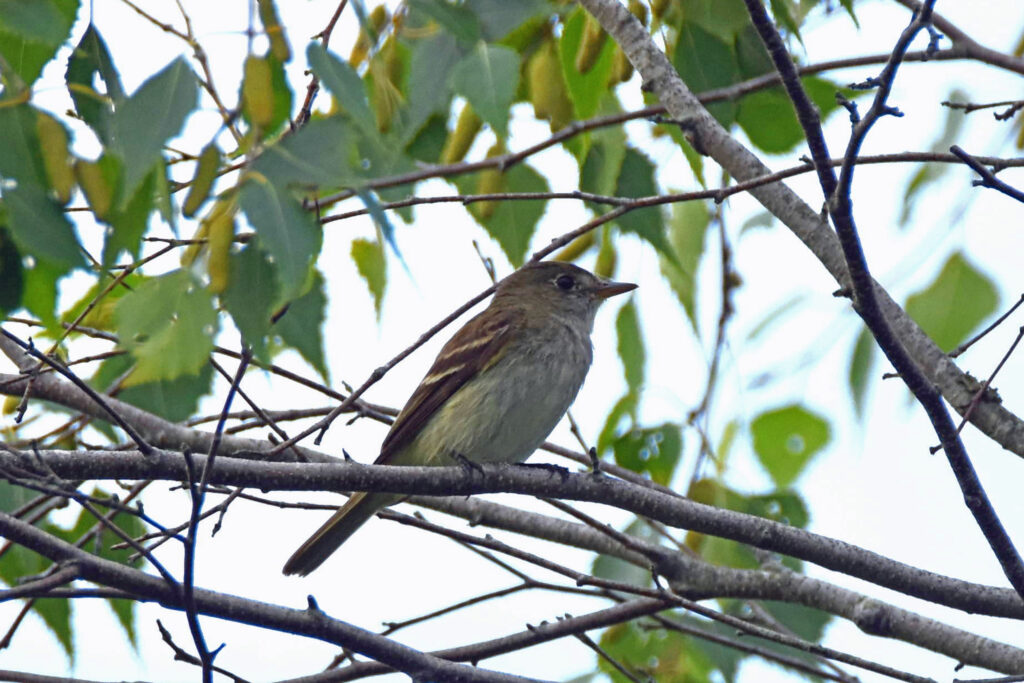
The Alder Flycatcher is a small passerine bird that belongs to the tyrant flycatcher family. They are small and stocky, measuring around 5.5 inches in length and weighing approximately 0.4 ounces. They have olive-green upperparts, a greyish head, and whitish underparts with buffy wash on the sides. The most distinguishing field mark of the Alder Flycatcher is its distinctive “free-beer” call, which is a series of sharp, high-pitched notes that sound like “fee-bee-o.”

Alder Flycatchers breed in the boreal forests of Canada and Alaska, and migrate to the southeastern United States and Central America for the winter. They can be found in wet areas such as bogs, swamps, and wet meadows, where they build their nests in shrubs or small trees. During the breeding season, they primarily feed on insects, which they catch in flight or pluck from vegetation.
Although the Alder Flycatcher looks very similar to other closely related flycatchers, such as the Willow Flycatcher, they can be distinguished by their call. The Willow Flycatcher’s call is a softer and lower-pitched “fitz-bew,” while the Alder Flycatcher’s call is much sharper and higher-pitched. In addition, the Alder Flycatcher’s habitat preferences are different from those of the Willow Flycatcher. While both species can be found in wet habitats, the Alder Flycatcher prefers more densely vegetated areas.
Despite their small size and unassuming appearance, Alder Flycatchers play an important role in their ecosystem. They help control insect populations, including potentially harmful pests, and are themselves an important food source for predators such as hawks and snakes. Additionally, their nesting activities can help create habitat for other wildlife, such as songbirds and small mammals.

Due to their migratory behavior and reliance on specific habitat types, Alder Flycatchers are considered a species of conservation concern in some areas. Efforts to protect and conserve their breeding and wintering habitats can help ensure that this important species continues to thrive in the years to come.

